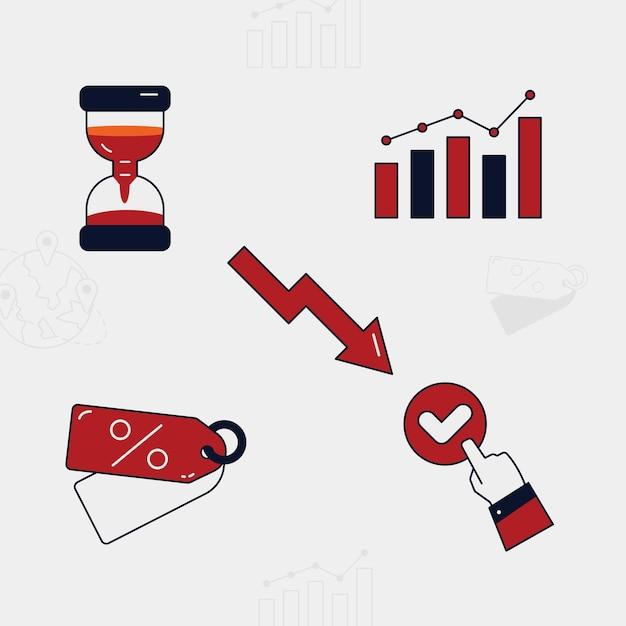Are you using Salesforce but considering a switch to Microsoft Dynamics 365? You’re not alone! Many businesses are finding that Dynamics 365 offers a compelling suite of features and advantages over Salesforce. In this blog post, we’ll explore the benefits of migrating to Dynamics 365, the best practices for data migration, and the integration possibilities between the two platforms. Whether you’re looking for a more streamlined CRM solution or want to take advantage of Microsoft’s powerful suite of business applications, we’ve got you covered. Let’s dive in!
Migrating from Salesforce to Dynamics 365: What You Need to Know
So you’ve made the decision to migrate from Salesforce to Dynamics 365. Congratulations! It’s a big move, but one that can bring a lot of benefits to your business. But before you dive in headfirst, there are a few things you should know. In this article, we’ll cover everything you need to know about migrating from Salesforce to Dynamics 365. From the benefits to the challenges and everything in between, we’ve got you covered.
Benefits of Migrating to Dynamics 365
Migrating from Salesforce to Dynamics 365 brings with it a whole host of benefits. One of the biggest advantages is the seamless integration with other Microsoft products. If your business already uses Microsoft Office, SharePoint, or other Microsoft applications, migrating to Dynamics 365 will allow for a more streamlined workflow. Plus, Dynamics 365 offers powerful analytics and reporting capabilities, giving you the tools you need to make data-driven decisions that can drive your business forward.
Challenges to Consider
Of course, no migration is without its challenges. Moving from one CRM system to another can be a complex process, and it’s important to be prepared. One of the biggest challenges you may face is data migration. Ensuring that all of your data is transferred accurately and securely can be a daunting task. It’s also important to consider the potential impact on your users. Change is never easy, so it’s important to communicate the benefits of the migration to your team and provide them with the necessary training and support.
Planning and Preparation
To ensure a successful migration, careful planning and preparation are essential. Start by conducting a thorough audit of your current Salesforce system. Take stock of your data, workflows, and customizations to determine what needs to be migrated and what can be left behind. It’s also a good idea to involve key stakeholders from across your organization to ensure that everyone’s needs are taken into account.
The Migration Process
Once you have a solid plan in place, it’s time to start the migration process. This typically involves exporting your data from Salesforce and importing it into Dynamics 365. Depending on the complexity of your data and the customizations you have in place, this process can vary in length and complexity. It’s important to have a backup plan in case anything goes wrong during the migration, and to thoroughly test the new system before fully transitioning.
Post-Migration Considerations
Once the migration is complete, your work is not done. It’s important to conduct post-migration testing to ensure that everything is functioning as expected. You should also provide thorough training and support to your users to help them adjust to the new system. And finally, don’t forget to take advantage of the resources and support available to you. Both Salesforce and Microsoft offer extensive documentation, training, and customer support to help you make the most of your new CRM system.
In conclusion, migrating from Salesforce to Dynamics 365 can be a game-changer for your business. With careful planning, preparation, and execution, you can enjoy the many benefits that Dynamics 365 has to offer. Just remember to communicate with your team, stay organized, and lean on the support available to you. Good luck with your migration journey!
Salesforce to Dynamics 365 Integration
Why Integrate Salesforce and Dynamics 365
So, you’ve been using Salesforce to manage your sales and customer relationship management (CRM), but now you’re considering making the switch to Dynamics 365. Integrating Salesforce with Dynamics 365 can bring a whole new level of efficiency and effectiveness to your business operations.
Benefits of Salesforce and Dynamics 365 Integration
-
Streamlined data flow: By integrating Salesforce and Dynamics 365, you can ensure that your data is seamlessly synced between the two platforms. This means no more manual data entry or duplicate records, saving you time and reducing the risk of errors.
-
Improved collaboration: Integration allows your sales and marketing teams to work together more effectively. They can easily access the same customer data and share valuable insights, leading to better-informed decisions and increased productivity.
-
Enhanced reporting and analytics: With both Salesforce and Dynamics 365 working together, you’ll have access to a wealth of combined data. This allows for more comprehensive reporting and deeper insights into your business performance, enabling you to make data-driven decisions.
How to Integrate Salesforce and Dynamics 365
-
Evaluate your needs: Before starting the integration process, assess your business requirements. Identify which data elements need to be synced, such as accounts, contacts, opportunities, and custom fields. This will help determine the scope of the integration.
-
Choose a reliable integration tool: There are several integration tools available that can facilitate the connection between Salesforce and Dynamics 365. Research and select a tool that suits your specific needs in terms of features, ease of use, and cost.
-
Map your data: Create a mapping strategy to define how your Salesforce data will be mapped to the corresponding fields in Dynamics 365. Ensure that all the necessary data is accurately mapped to avoid any loss or confusion during the integration process.
-
Test and validate: Before going live with the integration, thoroughly test the connection and verify that the data is being synced correctly. This step is crucial to ensure a smooth transition and prevent any errors or data inconsistencies.
Integrating Salesforce and Dynamics 365 offers a multitude of benefits, from improved collaboration and data flow to enhanced reporting and analytics. By following the integration process and testing diligently, you can seamlessly migrate Salesforce to Dynamics 365 and harness the power of both platforms to drive your business forward. So, don’t hesitate to make the move and experience the advantages of this integration firsthand!
Microsoft Dynamics 365 CRM vs Salesforce
Introduction
When it comes to choosing a CRM platform, two heavy hitters are Microsoft Dynamics 365 CRM and Salesforce. Both offer a range of features and capabilities that can help businesses streamline their sales and marketing efforts. In this section, we will delve into the key differences and similarities between the two platforms, helping you make an informed decision when deciding which one is right for your business.
Customization and Flexibility
One of the main factors to consider when choosing a CRM platform is its customization and flexibility. Microsoft Dynamics 365 CRM and Salesforce both offer robust customization options, allowing businesses to tailor the CRM to their unique requirements. However, there are some notable differences in how they approach customization.
Microsoft Dynamics 365 CRM:
With Dynamics 365 CRM, the focus is on providing a highly flexible and adaptable platform. It offers a wide range of out-of-the-box features and easy-to-use customization tools that require minimal coding knowledge. This makes it a great choice for businesses that want to quickly configure and modify their CRM to align with their specific needs.
Salesforce:
On the other hand, Salesforce offers a more developer-friendly customization experience. It provides a powerful platform that allows businesses to build highly customized solutions using its proprietary programming language called Apex. This level of customization can be advantageous for businesses with complex workflows or unique business requirements.
Integration Capabilities
Another crucial aspect to consider is the integration capabilities of the CRM platform. After all, a CRM should seamlessly integrate with your existing systems and applications to ensure a smooth transition and optimal functionality.
Microsoft Dynamics 365 CRM:
Dynamics 365 CRM is part of the larger Microsoft ecosystem, meaning it integrates seamlessly with other Microsoft products such as Outlook, SharePoint, and Power BI. This cohesive integration can simplify workflows and provide a unified experience for users who are already accustomed to working with Microsoft tools.
Salesforce:
Salesforce also offers a range of integration options through its AppExchange marketplace. It allows businesses to connect Salesforce with popular third-party applications and services, expanding its functionality even further. However, compared to Dynamics 365 CRM, Salesforce may require more effort and configuration to achieve the desired level of integration.
Pricing and Scalability
Pricing and scalability are essential considerations for businesses of all sizes. While both Dynamics 365 CRM and Salesforce offer flexible pricing options, there are some differences to be aware of.
Microsoft Dynamics 365 CRM:
Dynamics 365 CRM offers a modular pricing structure, allowing businesses to pay for the specific features and capabilities they need. This flexibility can be advantageous for businesses on a budget or those looking for a more cost-effective solution. Additionally, Microsoft offers scalability options, ensuring that the CRM can grow alongside your business.
Salesforce:
Salesforce, on the other hand, follows a more tiered pricing model, with different editions catering to different business needs. While this can provide more comprehensive features, it may also come at a higher price point. Businesses considering Salesforce should carefully evaluate their requirements to ensure they select the most appropriate edition.
In the battle of Microsoft Dynamics 365 CRM vs Salesforce, there is no clear winner. It ultimately depends on the unique needs and preferences of your business. Dynamics 365 CRM offers a highly flexible and easy-to-use platform with seamless integration into the Microsoft ecosystem. On the other hand, Salesforce provides extensive customization options and a robust marketplace for integrating with third-party applications. By understanding the key differences between these CRM platforms, you can confidently make a decision that aligns with your business goals.
Why Dynamics 365 is a Better Choice than Salesforce
Flexibility and Customization
When it comes to flexibility and customization, Dynamics 365 has the edge over Salesforce. With Dynamics 365, you have the ability to tailor the platform to suit your specific business needs. You can easily customize fields, forms, and workflows without the need for complex coding. This allows you to create a solution that fits your unique requirements, giving you the freedom to adapt as your business evolves.
Seamless Integration
Dynamics 365 offers seamless integration with other Microsoft products such as Office 365, Power BI, and Azure. This integration provides a unified experience, allowing you to work seamlessly across different applications. With Salesforce, you may find yourself juggling between multiple platforms, which can be time-consuming and frustrating. Dynamics 365 eliminates the need for such inconvenience, providing a streamlined solution that enhances productivity and collaboration.
Enhanced User Experience
The user experience in Dynamics 365 is intuitive and user-friendly. The platform is designed with simplicity in mind, making it easy for both new and experienced users to navigate and utilize its features. Salesforce, on the other hand, can be overwhelming for some users, especially those who are not familiar with its complex interface. Dynamics 365 offers a more straightforward and efficient user experience, reducing the learning curve and increasing user adoption.
Powerful Analytics and Reporting
Dynamics 365 provides powerful analytics and reporting capabilities through its native integration with Power BI. With Power BI, you can generate insightful reports and visualizations that enable you to make data-driven decisions. Salesforce also offers analytics features, but they are not as robust as those offered by Dynamics 365. The advanced analytics capabilities of Dynamics 365 give you a competitive advantage, allowing you to gain deeper insights into your business and stay ahead of the competition.
Cost-Effective Solution
When considering the cost, Dynamics 365 presents a more cost-effective solution compared to Salesforce. Dynamics 365 offers flexible pricing options, allowing you to choose the specific applications and features that align with your business needs. This flexibility ensures that you only pay for what you use, saving you money in the long run. Salesforce, on the other hand, has a complex pricing structure that may include additional costs for add-ons and customizations. Dynamics 365 eliminates any hidden costs and provides a transparent pricing model.
In conclusion, Dynamics 365 stands out as the better choice over Salesforce due to its flexibility, seamless integration, user-friendly interface, powerful analytics, and cost-effectiveness. With Dynamics 365, you can migrate from Salesforce and enjoy a comprehensive and efficient CRM solution that caters to your unique business requirements. So why settle for Salesforce when you can have Dynamics 365?
Dynamics 365 Data Migration Best Practices
Understanding the Importance of Data Migration
When it comes to migrating your Salesforce data to Dynamics 365, data migration plays a key role. It involves moving and transferring your valuable business information, ensuring a smooth transition. However, this process can be complex and overwhelming, so it’s important to follow best practices to avoid any potential pitfalls.
Plan and Map Your Data
Before diving headfirst into the migration process, it’s crucial to plan and map out your data. Take the time to understand what data needs to be migrated, identify any duplicate or redundant information, and determine how it will be structured in Dynamics 365. By having a clear plan in place, you’ll be able to streamline the migration process and avoid any unnecessary complications.
Cleanse and Validate Your Data
Data quality is paramount in any migration project. Take the opportunity to cleanse and validate your data before the migration. This involves removing any irrelevant or outdated information, standardizing data formats, and ensuring data integrity. By doing so, you’ll prevent any data discrepancies or discrepancies that could arise during the migration process.
Consider Data Security
Data security should always be a top priority. When migrating your data to Dynamics 365, it’s important to consider the security measures that need to be implemented to protect your sensitive information. This includes data encryption, access controls, and monitoring mechanisms. By addressing data security concerns upfront, you can rest assured knowing that your data is safe and secure.
Conduct Thorough Testing
Before completing the migration, it’s essential to conduct thorough testing to ensure data accuracy and functionality within Dynamics 365. This involves running test migrations with a small subset of data, validating the results, and addressing any issues that arise. By testing the migration process, you can identify and rectify any potential problems before they impact your entire dataset.
Train Your Team
A successful data migration not only requires technical expertise but also user adoption. It’s crucial to train your team on the new Dynamics 365 system and the changes that come with it. By providing proper training and support, you can ensure a smooth transition and maximize the utilization of the new platform’s capabilities.
When migrating your Salesforce data to Dynamics 365, following these best practices will set you up for success. By planning, cleaning, and validating your data, addressing security concerns, conducting thorough testing, and providing training to your team, you can ensure a seamless and efficient transition. So, gear up and embark on your data migration journey with confidence!
Why Dynamics 365 is Better Than Salesforce
A Powerful and User-Friendly Solution
When it comes to choosing between Salesforce and Dynamics 365, one key aspect that sets Dynamics 365 apart is its user-friendliness. With its intuitive interface and seamless navigation, Dynamics 365 makes it easier for users to quickly adapt and maximize their efficiency. It eliminates the need for extensive training sessions and allows businesses to hit the ground running.
Integration and Compatibility
Another significant advantage of Dynamics 365 is its seamless integration with other Microsoft tools and services. Since Dynamics 365 is part of the Microsoft ecosystem, it effortlessly integrates with popular tools like Outlook, Excel, and SharePoint. This integration eliminates the need for separate platforms and enhances productivity by streamlining workflows and data management.
Flexibility and Scalability
Dynamics 365 offers businesses the flexibility and scalability they need to adapt to changing requirements. With its modular structure, businesses can choose and customize specific components that suit their unique needs. As your business grows, Dynamics 365 can easily scale up to accommodate increased workload and user demands.
Advanced Analytics and Reporting
Dynamics 365 comes equipped with powerful analytics and reporting capabilities, enabling businesses to gain valuable insights and make data-driven decisions. The built-in AI capabilities provide real-time analytics, predictive recommendations, and intelligent automation. This empowers businesses to identify trends, spot opportunities, and optimize their sales and marketing strategies effectively.
Lower Total Cost of Ownership
Choosing Dynamics 365 over Salesforce can lead to significant cost savings in the long run. Salesforce often requires additional plug-ins and add-ons, increasing the overall cost of ownership. In contrast, Dynamics 365 provides a comprehensive suite of tools and functionality without the need for extensive add-ons. This helps businesses to streamline their expenses and allocate resources more effectively.
While Salesforce has its merits, Dynamics 365 offers a compelling array of advantages for businesses looking to migrate. Its user-friendliness, seamless integration, flexibility, advanced analytics, and lower total cost of ownership make it a strong contender. By choosing Dynamics 365, businesses can harness the full potential of a robust CRM solution while keeping their processes efficient and cost-effective. So, why settle for anything less when you can have the best with Dynamics 365?
How to Migrate to Microsoft Dynamics 365
So you’ve decided to migrate from Salesforce to Microsoft Dynamics 365. Migrating your data and processes to a new CRM system can feel intimidating, but with the right approach, it can be a smooth and successful transition. In this guide, we’ll walk you through the steps involved in migrating to Microsoft Dynamics 365, ensuring you have all the information you need to make the process as seamless as possible.
Evaluating Your Current Salesforce Setup
Before diving into the migration process, it’s important to conduct a thorough evaluation of your current Salesforce setup. Take the time to identify the data and features you want to migrate to Dynamics 365. This will help you determine what needs to be transferred and what can be left behind. It’s also a great opportunity to clean up your data and get rid of any duplicates or outdated information.
Planning the Migration Strategy
Once you have a clear understanding of what you’re looking to migrate, it’s time to develop a detailed migration strategy. This plan should outline the steps you’ll take, the order in which you’ll tackle them, and provide a timeline to keep everyone on track. Make sure to involve stakeholders from different departments to ensure a smooth transition and address any potential concerns or challenges.
Data Migration
When it comes to migrating your data from Salesforce to Dynamics 365, there are several options available. You can use tools provided by Microsoft, such as the Data Migration Assistant, or consider third-party migration tools that offer additional features and flexibility. Whatever method you choose, it’s crucial to test the migration process and verify the accuracy of the transferred data before fully committing to the switch.
Customizations and Integrations
Chances are, your Salesforce setup includes customizations and integrations tailored to your specific business needs. As you migrate to Dynamics 365, you’ll need to reconfigure these customizations to fit the new platform. Take the time to map out your current customizations and determine how they can be recreated in Dynamics 365. Additionally, consider any integrations you’ll need to establish with other systems and ensure they are properly set up during the migration process.
Training and Adoption
Once your data is successfully migrated and your customizations are in place, it’s crucial to train your team on how to use Microsoft Dynamics 365 effectively. Familiarize them with the new interface, introduce them to any new features and functionalities, and address any questions or concerns they may have. Encourage adoption by highlighting the benefits of Dynamics 365 and the improvements it will bring to their daily workflows.
Testing and Go-Live
Before fully going live with Dynamics 365, it’s essential to conduct thorough testing to ensure everything is functioning as expected. Test your configurations, data integrity, customizations, and integrations to identify and resolve any potential issues or glitches. Once everything is running smoothly, it’s time to officially go live with Microsoft Dynamics 365 and start reaping the benefits of your migration.
Migrating from Salesforce to Microsoft Dynamics 365 can be a complex process, but with careful planning, proper testing, and effective training, it can lead to improved efficiency and productivity for your organization. Take the time to evaluate your current setup, develop a migration strategy, and ensure a smooth transition for your team. With the right approach, you’ll be up and running on Dynamics 365 in no time!
Does Salesforce integrate with Dynamics 365
So you’re thinking about making the switch from Salesforce to Dynamics 365? One of the important factors to consider is how well these platforms can work together. Can you integrate Salesforce with Dynamics 365? The short answer is, yes!
Salesforce and Dynamics 365 Integration: A Perfect Match
When it comes to integrating Salesforce with Dynamics 365, these two platforms can actually play nice together. With the right tools and setup, you can seamlessly connect and transfer data between the two systems.
Data Migration Made Easy
Migrating data from Salesforce to Dynamics 365 might sound like a daunting task, but fear not! There are various tools available that can help simplify the process. These tools allow you to map and transfer your data, ensuring a smooth transition without losing any valuable information.
Syncing Systems
Once your data is safely migrated, you’ll want to keep it up to date across both platforms. Thankfully, Salesforce and Dynamics 365 can be integrated in such a way that changes made in one system are automatically synced to the other. This ensures that your team is always working with the most current and accurate information.
Streamline Workflows
Integrating Salesforce with Dynamics 365 opens up opportunities to streamline your workflows. By connecting the two platforms, you can automate processes, such as creating new leads in Salesforce when a new contact is added in Dynamics 365. This eliminates the need for manual data entry and increases overall efficiency.
Consolidate Reporting
Another advantage of integrating Salesforce with Dynamics 365 is the ability to consolidate your reporting efforts. With the right setup, you can pull data from both platforms to create comprehensive reports and gain a holistic view of your business performance. This allows for better decision-making and more accurate insights.
In summary, Salesforce and Dynamics 365 can indeed integrate and coexist harmoniously. From data migration to streamlined workflows and consolidated reporting, these platforms offer a range of integration capabilities that can benefit your business. So, if you’re considering making the move, fear not! You can have the best of both worlds with Salesforce and Dynamics 365.



